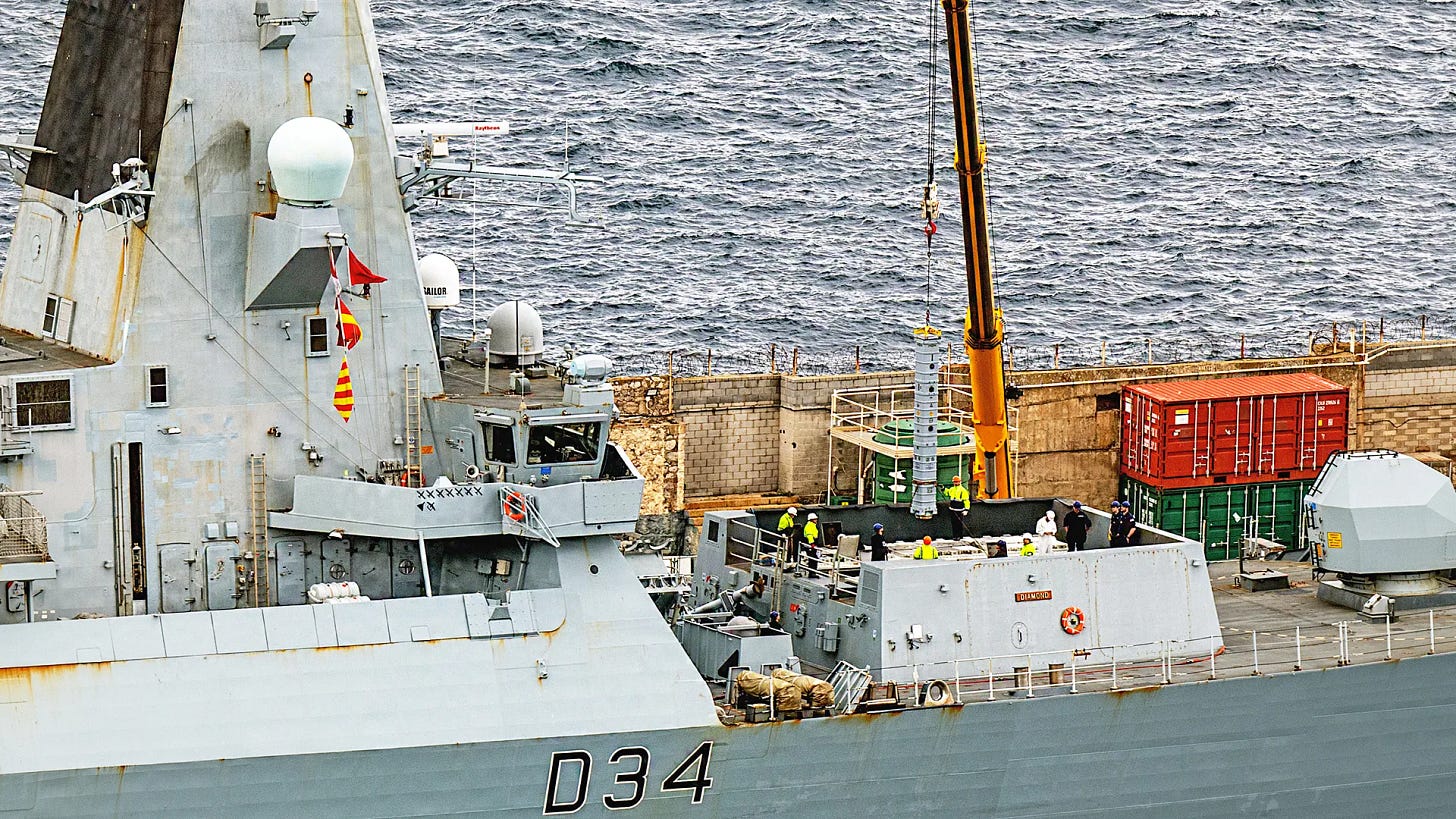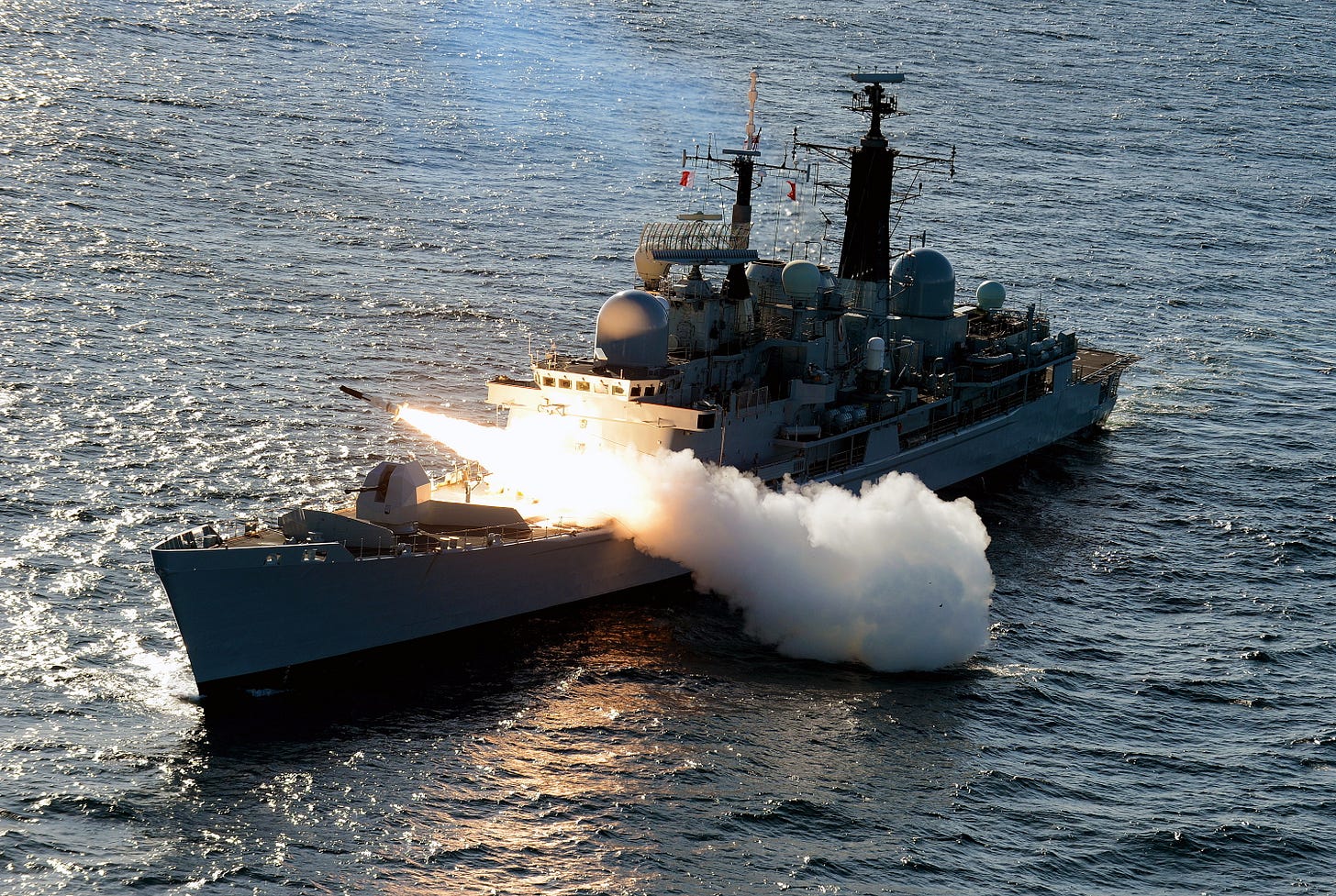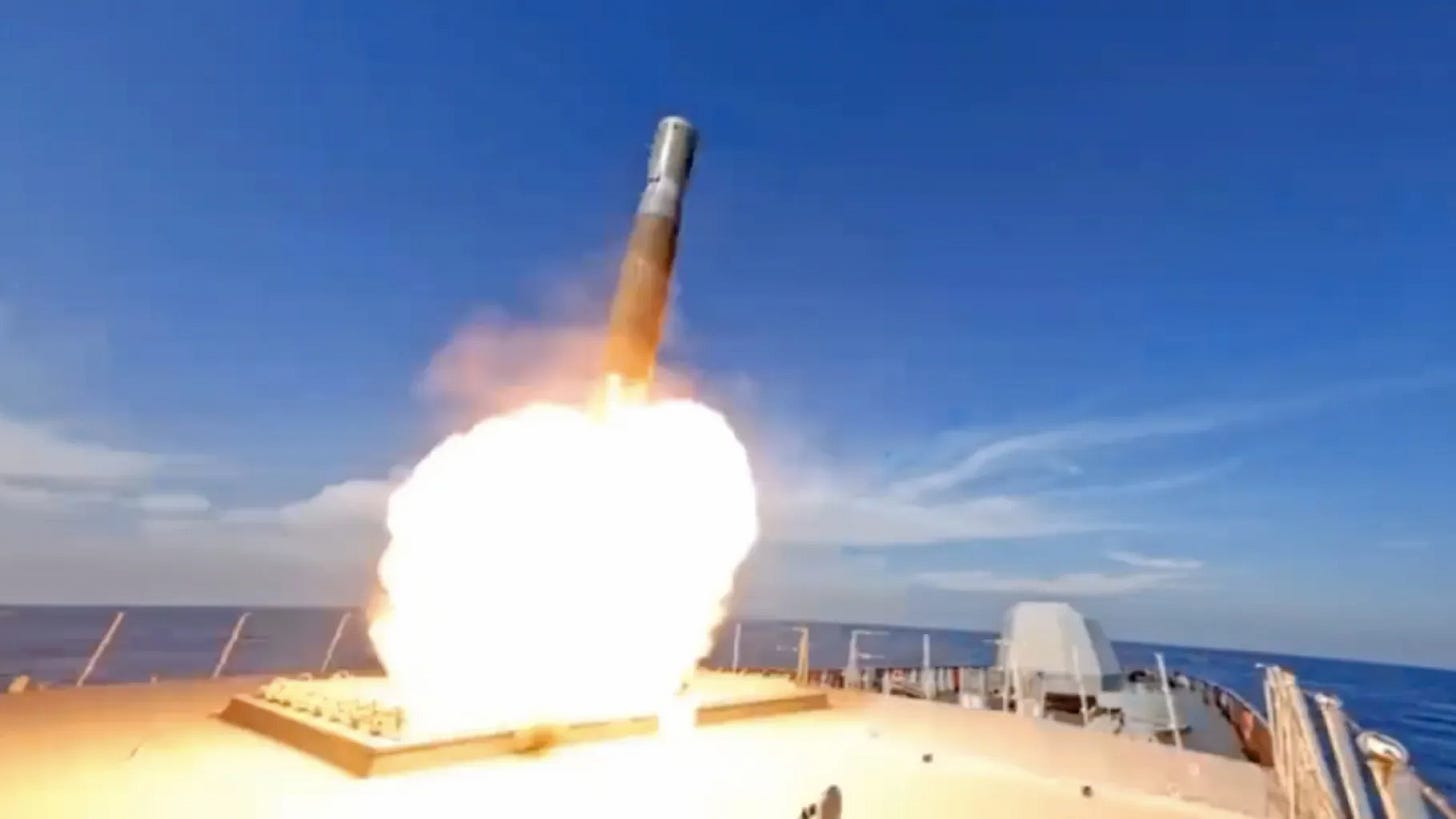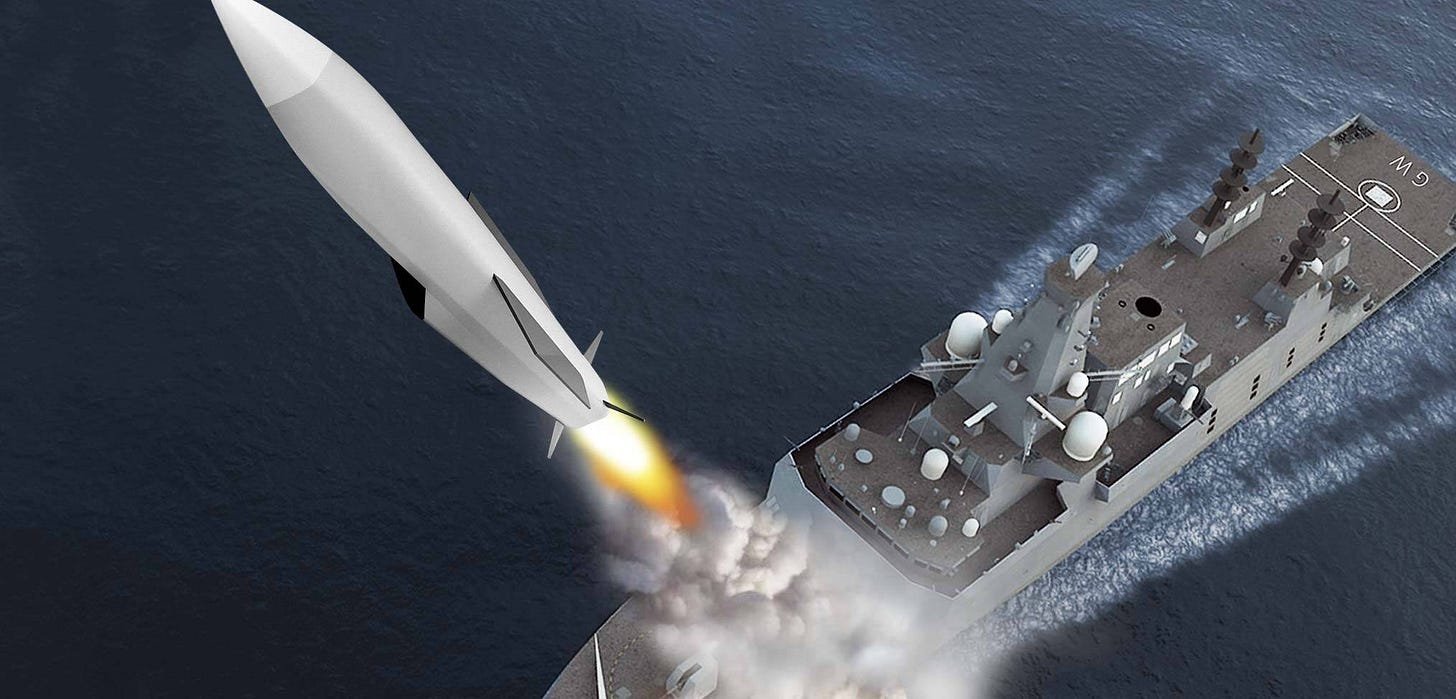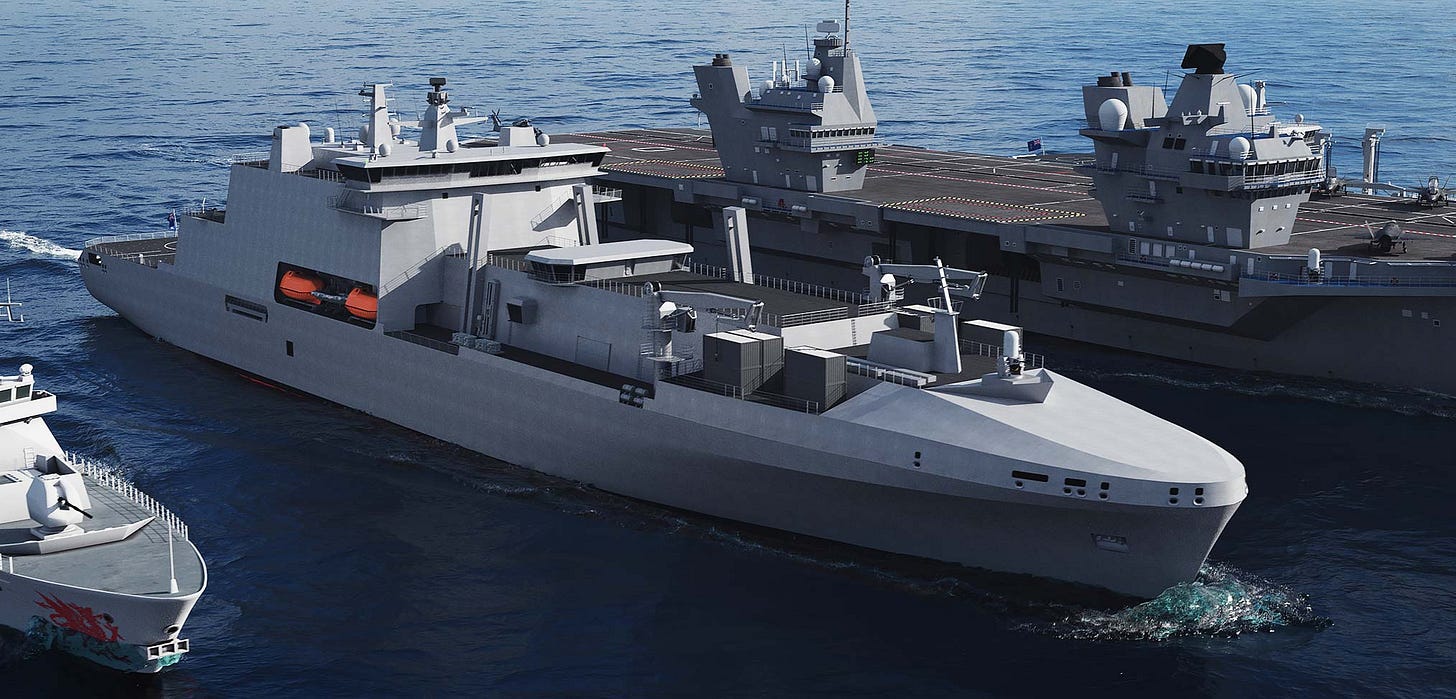Beyond the First Salvo
Why Most Modern Navies Still Can't Reload Missile Systems at Sea
Despite the advances in naval missile systems over the past four decades, a fundamental limitation remains unaddressed: most modern warships are still designed to fire once and then withdraw.
This constraint isn't unique to the Royal Navy. It applies across the world's leading naval powers, including Russia, China, and most NATO allies. Even the most advanced vertical launch system (VLS)-equipped ships must return to port to replenish their missile magazines. The result is a shared operational model, one that assumes warships will fight their first encounter on full capability, but not the second.
Only one navy is actively changing that model. Another has quietly shown how to mitigate its effects.
A Known Limitation, Long Endured
The Falklands War of 1982 exposed critical vulnerabilities in the Royal Navy's missile resupply capabilities, revealing that long supply lines, limited initial missile stocks, and the extreme vulnerability of unarmored replenishment ships, such as the Atlantic Conveyor, severely hampered combat effectiveness. Commanders faced a stark "use it or lose it" dilemma, often forced to expend precious missiles to counter immediate threats with little hope of rapid replenishment. This experience highlighted the urgent need for robust logistical infrastructure, improved at-sea transfer methods, and enhanced air defence for all vessels in future conflicts. Today, however, that lesson remains unaddressed mainly in practice.
The Royal Navy: Capability Without Sustained Effect
Modern Royal Navy surface combatants, including the Type 45 destroyers and Type 23/31 frigates, field advanced missile systems like Sea Viper and Sea Ceptor, housed in VLS canisters. These systems offer high readiness and reliability, but are not designed for at-sea reloading.
In early 2024, HMS Diamond demonstrated this constraint in real time. After successfully intercepting multiple threats in the Red Sea, she was forced to withdraw to Gibraltar to reload her VLS, a multi-thousand-mile round trip, during an active operation. This was not a reflection of failure at the tactical level, but rather a result of systemic design limitations that echo the constraints of 1982.
Russia and China: Advanced Arsenal, Similar Constraints
Both Russia and China face comparable challenges.
The Russian Navy operates modern missiles, including Kalibr and Zircon, which are deployed aboard surface ships and submarines. Once launched, these weapons cannot be replenished at sea — reloading takes place in port.
The Chinese PLAN operates a growing fleet of modern destroyers (Types 055 and 052D), also equipped with large VLS arrays. Like Russia and the UK, China does not appear to possess an operational at-sea missile replenishment capability; instead, it relies on a network of shore-based and forward-deployed logistics facilities.
In both cases, the model remains static: fight on initial load, return to base to reload.
The U.S. Navy: A Deliberate Shift Toward Endurance
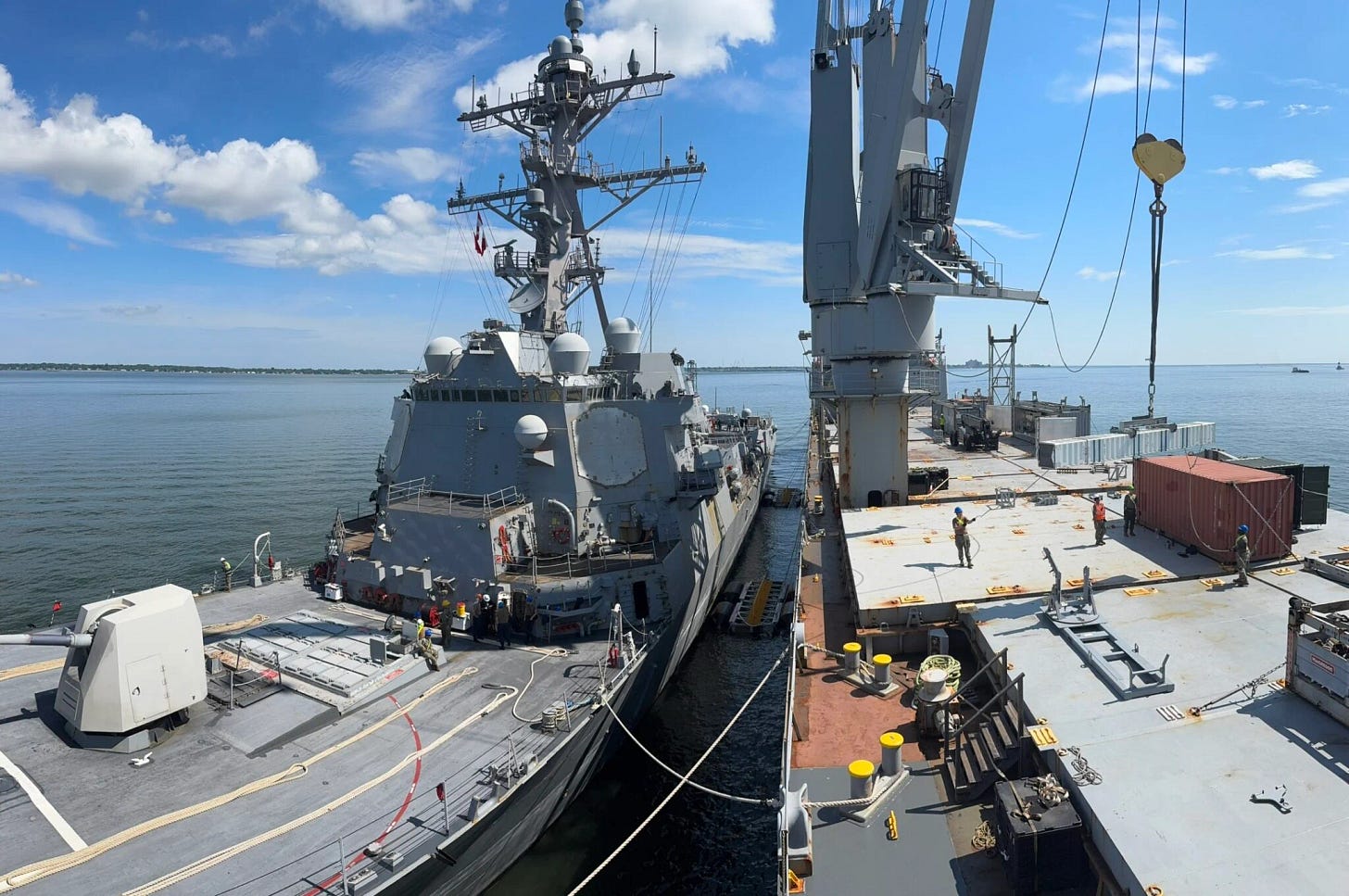
The U.S. Navy is currently the only naval force actively overcoming the long-standing limitation of at-sea missile resupply. Following a successful 2024 demonstration of the Transferrable Re-Arming Mechanism (TRAM) aboard USS Chosin, 2025 has seen further progress, not just in concept, but in operational testing.
In July 2025, during Large Scale Exercise 2025 off Norfolk, the Navy conducted a refined VLS reload evolution involving:
USS Farragut (DDG‑99), a Flight IIA Arleigh Burke-class destroyer, equipped with newly fitted receiving frames on its aft Mk 41 VLS cells
USNS Gopher State, a Ready Reserve Force crane ship, serving as the logistics platform
Missile canisters were craned across in a protective cage and carefully lowered into the VLS receiving frame, simulating a high-readiness replenishment under realistic maritime conditions.
This trial marks a key milestone. Unlike earlier TRAM trials, the Farragut evolution transferred multiple missiles in sequence, indicating the system’s scalability and repeatability in real-world sea states.
According to participating officers, the operation was not simply a test of mechanics — it was a demonstration of logistics as a warfighting enabler. The ability to rearm forward-deployed ships without forcing a port withdrawal represents a fundamental shift in how naval combat endurance is delivered.
If integrated across the fleet as planned by 2027, TRAM and its supporting systems will enable the U.S. Navy to remain on station longer, recover faster, and fight more persistently — a capability that no other navy, at present, possesses.
France: A Demonstration of Integrated Sustainment
The FS Jacques Chevallier is the French Navy's new lead replenishment tanker, designed to provide comprehensive logistical support, including fuel, ammunition, and provisions, to naval task groups like the Charles de Gaulle carrier strike group, thereby replacing older vessels and significantly enhancing the fleet's sustained operational capabilities.
While France has not developed an at-sea VLS reload system, its 2025 Clemenceau deployment to the Indo-Pacific provides a clear example of how careful planning and forward-based logistics can extend naval presence without forcing withdrawal.
The French Carrier Strike Group, centred on Charles de Gaulle, remained on station for 150 days — supported by the replenishment vessel Jacques Chevallier and pre-arranged port access in Darwin, Subic Bay, and Okinawa.
This approach allowed the French Navy to:
Rotate and resupply escorts without leaving the region
Maintain a credible deterrent posture across the deployment
Deliver operational continuity without the need for full at-sea VLS rearming
It wasn't a technological fix — it was a doctrinal and logistical success.
Strategic Implications for the Royal Navy
Despite having more combat experience than any other NATO navy in this domain, the Royal Navy continues to operate within the same endurance limits it faced in 1982. The Royal Fleet Auxiliary (RFA), which should underpin any solution, faces crewing shortages and availability constraints. The transfer of Stirling Castle from RFA to Royal Navy service in 2025 reflects deeper pressure within the support fleet.
The 2025 Strategic Defence Review has committed to greater missile stockpiles and production. Still, it has not addressed the core issue of how to sustain missile combat in the theatre.
Recommendations
To transition beyond the first-salvo model, the Royal Navy should:
Ensure Fleet Solid Support Tranche 2 includes VLS-capable rearmament infrastructure
Pursue modular rearmament systems, including containerised or autonomous solutions
Expand allied interoperability, learning from U.S. technology and French deployment models
Stabilise and invest in the RFA, ensuring the availability of capable replenishment platforms
Final Reflection
The world's most advanced navies still operate under the assumption that their ships will fight once and withdraw. The Royal Navy is no exception. That assumption has shaped deployments, reduced endurance, and constrained operational tempo since the Falklands.
France has shown how smart logistics can extend a deployment. The United States is demonstrating that technology can overcome physical limitations. The UK must now decide whether to continue operating under constraints or design a force that can fight—and remain on station—in the conditions it is likely to face.
The ability to reload should not be a luxury. It should be a core feature of credible naval power.


